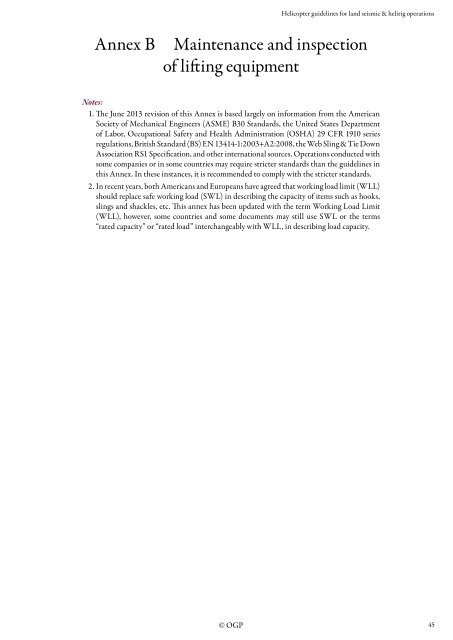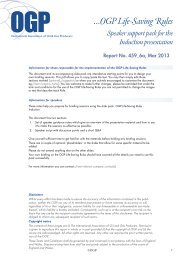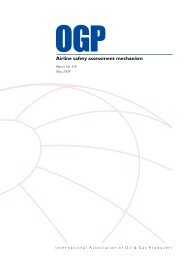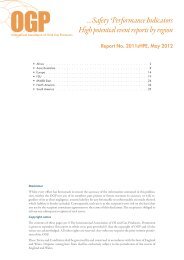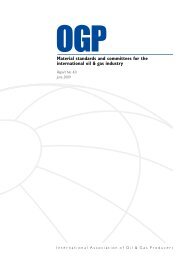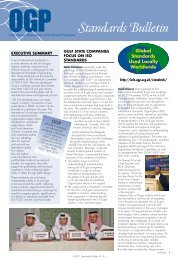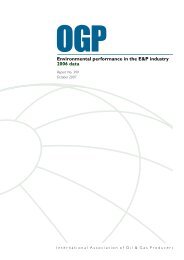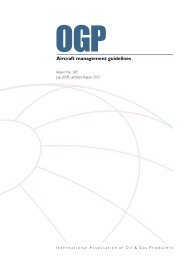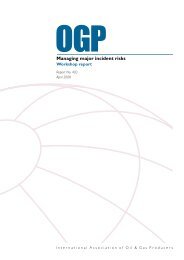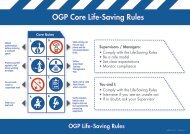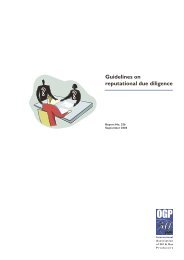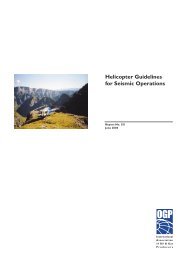Helicopter guidelines for land seismic & helirig operations - OGP
Helicopter guidelines for land seismic & helirig operations - OGP
Helicopter guidelines for land seismic & helirig operations - OGP
Create successful ePaper yourself
Turn your PDF publications into a flip-book with our unique Google optimized e-Paper software.
<strong>Helicopter</strong> <strong>guidelines</strong> <strong>for</strong> <strong>land</strong> <strong>seismic</strong> & <strong>helirig</strong> <strong>operations</strong><br />
Annex B<br />
Maintenance and inspection<br />
of lifting equipment<br />
Notes:<br />
1. The June 2013 revision of this Annex is based largely on in<strong>for</strong>mation from the American<br />
Society of Mechanical Engineers (ASME) B30 Standards, the United States Department<br />
of Labor, Occupational Safety and Health Administration (OSHA) 29 CFR 1910 series<br />
regulations, British Standard (BS) EN 13414-1:2003+A2:2008, the Web Sling & Tie Down<br />
Association RS1 Specification, and other international sources. Operations conducted with<br />
some companies or in some countries may require stricter standards than the <strong>guidelines</strong> in<br />
this Annex. In these instances, it is recommended to comply with the stricter standards.<br />
2. In recent years, both Americans and Europeans have agreed that working load limit (WLL)<br />
should replace safe working load (SWL) in describing the capacity of items such as hooks,<br />
slings and shackles, etc. This annex has been updated with the term Working Load Limit<br />
(WLL), however, some countries and some documents may still use SWL or the terms<br />
“rated capacity” or “rated load” interchangeably with WLL, in describing load capacity.<br />
© <strong>OGP</strong><br />
45


